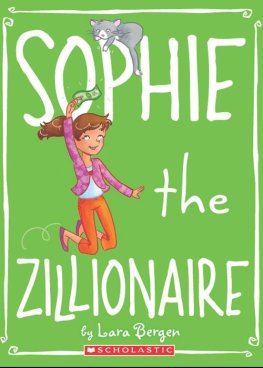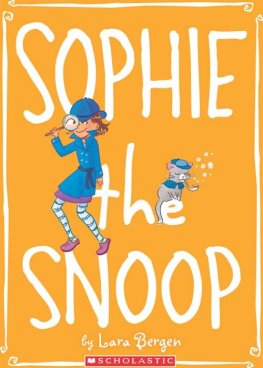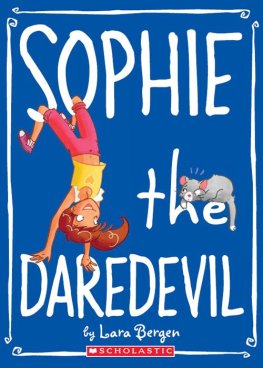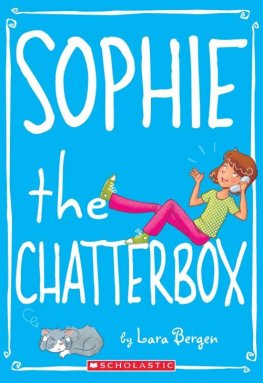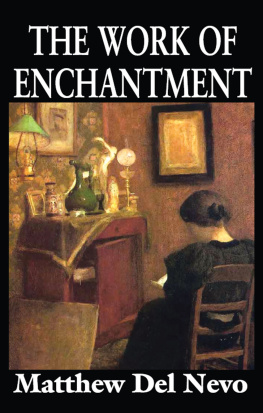Herxheimer Sophie - Wonder tales: six stories of enchantment
Here you can read online Herxheimer Sophie - Wonder tales: six stories of enchantment full text of the book (entire story) in english for free. Download pdf and epub, get meaning, cover and reviews about this ebook. City: France, year: 2012, publisher: Random House;Vintage Digital, genre: Art. Description of the work, (preface) as well as reviews are available. Best literature library LitArk.com created for fans of good reading and offers a wide selection of genres:
Romance novel
Science fiction
Adventure
Detective
Science
History
Home and family
Prose
Art
Politics
Computer
Non-fiction
Religion
Business
Children
Humor
Choose a favorite category and find really read worthwhile books. Enjoy immersion in the world of imagination, feel the emotions of the characters or learn something new for yourself, make an fascinating discovery.

- Book:Wonder tales: six stories of enchantment
- Author:
- Publisher:Random House;Vintage Digital
- Genre:
- Year:2012
- City:France
- Rating:4 / 5
- Favourites:Add to favourites
- Your mark:
- 80
- 1
- 2
- 3
- 4
- 5
Wonder tales: six stories of enchantment: summary, description and annotation
We offer to read an annotation, description, summary or preface (depends on what the author of the book "Wonder tales: six stories of enchantment" wrote himself). If you haven't found the necessary information about the book — write in the comments, we will try to find it.
Wonder tales: six stories of enchantment — read online for free the complete book (whole text) full work
Below is the text of the book, divided by pages. System saving the place of the last page read, allows you to conveniently read the book "Wonder tales: six stories of enchantment" online for free, without having to search again every time where you left off. Put a bookmark, and you can go to the page where you finished reading at any time.
Font size:
Interval:
Bookmark:
 CONTENTS
CONTENTSMarina Warner has gathered together a magical collection of fairy tales by the great women storytellers of the seventeenth and eighteenth centuries. These are passionate, extraordinary, and occasionally proto-feminist retellings of classic fairy stories by women who ingeniously used the fairy-tale genre to comment on their own times and experiences.
These stories are all in translations by celebrated writers, including Gilbert Adair, John Ashbery, Ranjit Bolt, A.S. Byatt and Terence Cave. With an illuminating introduction by Marina Warner, recognised as one of our greatest experts on myth and fairy tale.
Marina Warner is a novelist, historian and critic; her fiction includes Indigo, The Lost Father (awarded a Commonwealth Writers Prize) and the recent collection of stories, The Mermaids in the Basement. Her historical quests into areas of myth and symbolism Alone of All Her Sex, Joan of Arc and Monuments and Maidens led her into the exploration of fairy tales. She is the editor of Wonder Tales, a collection of fairy tales by the great woman storytellers of the 17th and 18th centuries, and author of a study of the fairy tale, From the Beast to the Blonde. In 1994 she gave the Reith Lectures on BBC radio, Managing Monsters: Six Myths of Our Time.
Marina Warner lives in London with her husband, the painter John Dewe Mathews, and her son.
Life And Times Of Tzu-hsi 18351908
Empress Dowager Of China
The Myth And The Cult Of The Virgin Mary
The Image Of Female Heroism
The Allegory Of The Female Form
(The Reith Lectures 1994)
On Fairy Tales And Their Tellers
With love, in wonder
Marina Warner
Sophie Herxheimer


 INTRODUCTION
INTRODUCTIONWONDER HAS NO opposite; it springs up already doubled in itself, compounded of dread and desire at once, attraction and recoil, producing a thrill, the shudder of pleasure and of fear. It names the marvel, the prodigy, the surprise as well as the responses they excite, of fascination and inquiry; it conveys the active motion towards experience and the passive stance of enrapturement. The French conte de fes is usually translated as fairy tale, but the word Wundermrchen was adopted by the Romantics in Germany and the Russian folklorists to characterise the folk tale or fairy tale. Its a useful term, it frees this kind of story from the miniaturised whimsy of fairyland to breathe the wilder air of the marvellous.
The six stories translated here were written in the heyday of the first literary enthusiasm for tales, by a group of writers who shared much else besides: they were urban, aristocratic, they knew one anothers work, and exchanged ideas about it in various Parisian htels particuliers where they entertained; in some cases, they were close friends. It was these writers, almost all women, telling stories and publishing them in a city setting under the Sun King at a quintessential moment of the ancient rgime , who consciously invented the modern fairy tale. Word games of all kind were a pastime, and the art of conversation developed as an ideal of salon society. Telling stories, elegantly, resourcefully, aptly, was required of a guest; in Mme de Murats novel, Les Lutins du chteau de Kernosy, one of the heroines unwanted suitors shows his dull wits when he fails to appreciate the importance of fantasy in narrative and goes to bed before the talespinning begins.
Charles Perrault, the famous author of Contes du temps pass (1697), in which the familiar versions of Cinderella, The Sleeping Beauty and so forth first appeared, is represented here by a gallant tale on which he is now thought to have collaborated with a most remarkable spoiled priest and libertine, the Abb de Choisy. Perrault championed the cause of the conte de fes against the scorn of his confrres in the Acadmie; he was a cousin of Marie-Jeanne LHritier and he responded to her ardent partisanship of the literary wonder tale. Furthermore, as the theme of The Counterfeit Marquise is cross-dressing and Choisy was a celebrated transvestite, as Perrault also travestied himself in the guise of ma Mre loye (Mother Goose) to publish his tales, it didnt seem inappropriate to allow their story into a book otherwise composed by women, some of them countesses and baronesses, if not marquises.
More than the deeds of the fairies, wonders characterise fairy tales; indeed, fairies dont even put in an appearance sometimes (there are none in Red Riding Hood, for instance). But marvels of all kinds tumble (and fly) thick and fast through these stories, and various fairies, good and bad, appear to conjure them; they can offer help or hindrance, white magic or black magic; they form part of the intrinsic quest structure of the tales, as the protagonists are put to the test. The heroine must climb a mountain wearing iron shoes and fill a cribbled pail, she must go down to hell and fetch the magic water of discretion. The wonders also serve to punish the wicked the ogre is deceived and beats thin air, thinking he is dispatching his enemy; sometimes they are both boon and bane, like the magic fruits in the fairies garden in The White Cat, which come when you whistle.
Magic expresses itself above all in shape-shifting, and indeed, metamorphosis could be said to be one of the distinguishing marks of this protean genre; Bearskin, Starlight, The White Cat, Hidessa in The Great Green Worm, and the lovers in The Counterfeit Marquise are all bound at one point or another in a different shape which conceals their true identity and their passion. The quest for love entails a quest for recognition of self, past the barriers of conventional expectation; love means that external social rules can be broken the prince is disturbed by the desire that stirs in him for Bearskin in her mute bear form, and Izmir feels the attraction of Starlight when shes been turned into a Moor, contrary to her fear that he will not love her now that she has turned black. The Great Green Worm is a tale of double metamorphosis in which both Hidessa, the ugly little one (Laidronette in the French) and the loathly worm find love before they are changed back into a fairy tale couple. All these transformations comment on the oppressive narrowness of the prevailing canon of beauty, the restrictive grasp of erotic possibilities. Although the tales are embedded in the values of their time, and bear the marks of its prejudices and its snobbery, they do also constantly press against the barriers to make them give way.
Font size:
Interval:
Bookmark:
Similar books «Wonder tales: six stories of enchantment»
Look at similar books to Wonder tales: six stories of enchantment. We have selected literature similar in name and meaning in the hope of providing readers with more options to find new, interesting, not yet read works.
Discussion, reviews of the book Wonder tales: six stories of enchantment and just readers' own opinions. Leave your comments, write what you think about the work, its meaning or the main characters. Specify what exactly you liked and what you didn't like, and why you think so.

